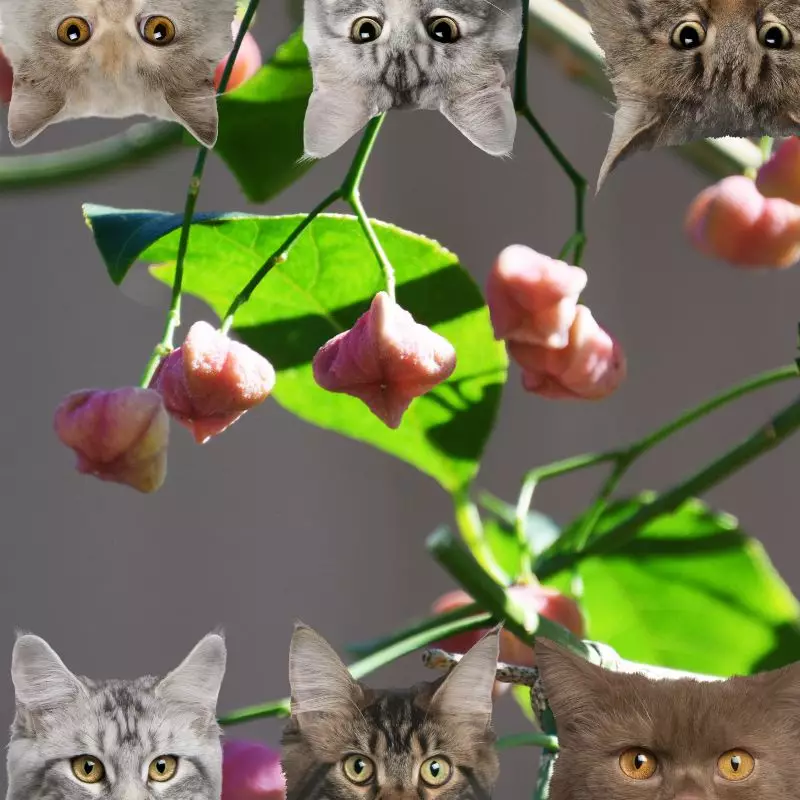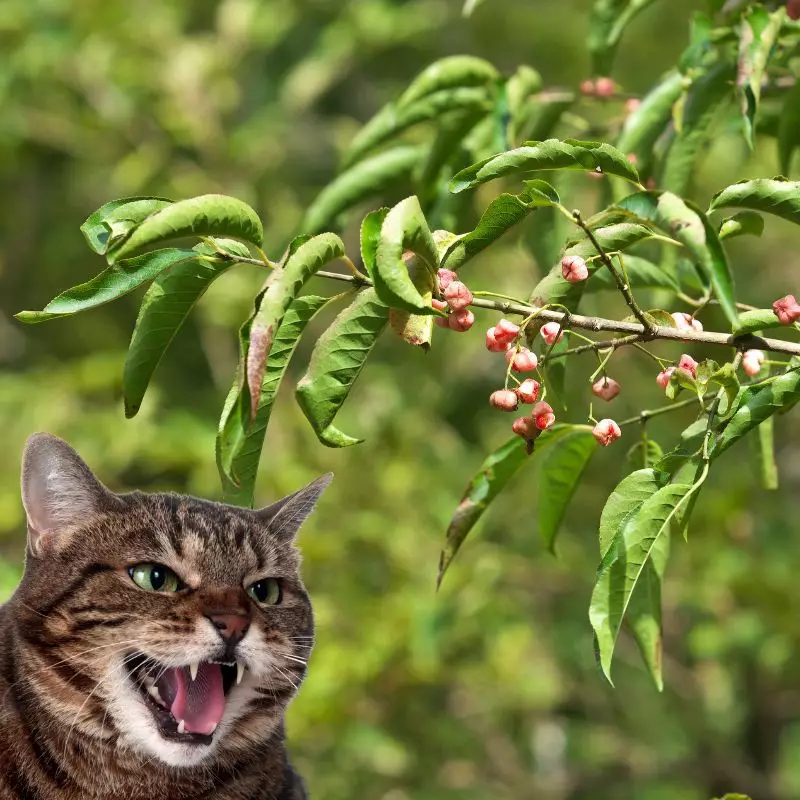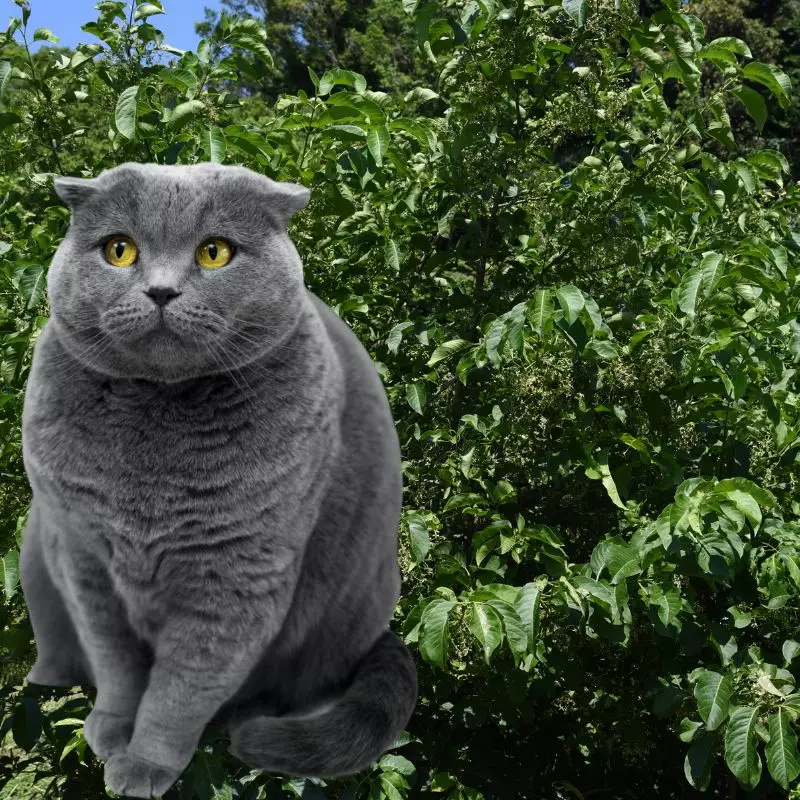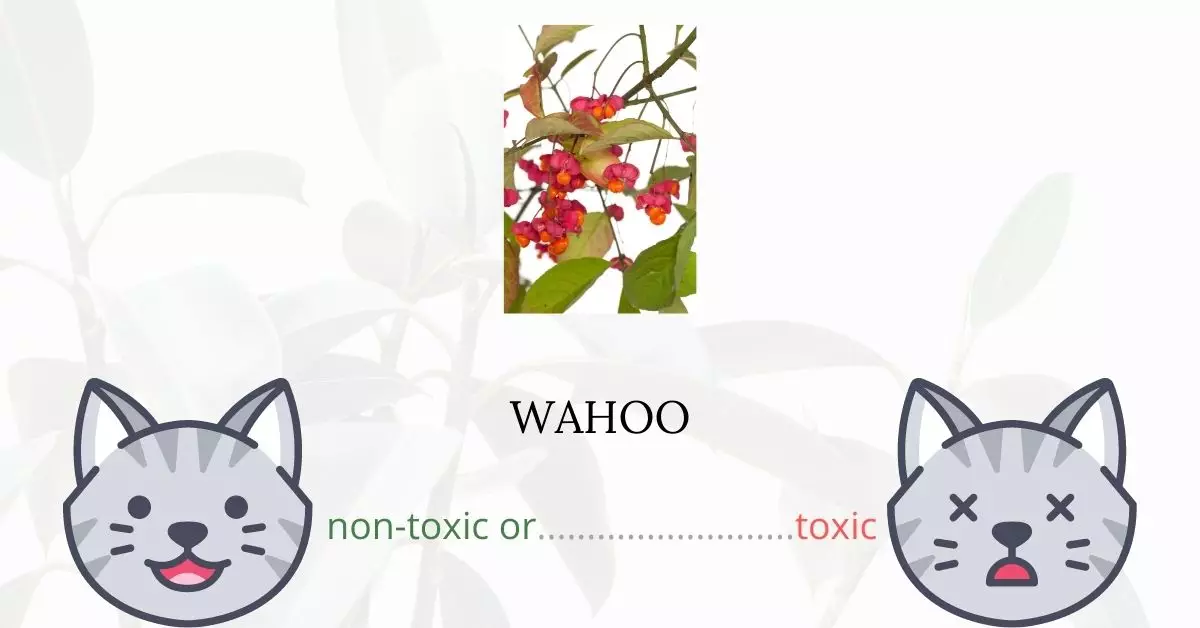Wahoo is indeed toxic to cats, posing significant risks if ingested. This plant contains harmful substances such as cardenolides, alkaloids, and glycosides—including evomonoside, evobioside, and evoouaside—which are present in all portions of the plant. These toxins can lead to severe digestive issues, organ damage, and if left untreated, can be fatal, potentially causing death within eight hours after the onset of symptoms.
This article is crafted in collaboration with a panel of experienced Doctors of Veterinary Medicine (DVMs), ensuring the provision of precise, timely, and reliable information regarding the potential hazards posed by Wahoo, among other plants, to cats. Their invaluable insights contribute significantly to our understanding of the detrimental effects different plants can have on cats. Furthermore, to uphold the accuracy and reliability of our information, extensive research has been conducted, referencing high-authority websites such as ASPCA and PetMD, guaranteeing that our readers receive the most current and verified knowledge on every plant discussed.
Clinical Signs of Wahoo Poisoning in Cats

When cats come into contact, ingest, or even just smell the Wahoo plant, it can lead to a multitude of severe and life-threatening symptoms due to the toxic substances found in the plant. Here, each clinical sign and its underlying cause are explored in detail to provide a comprehensive understanding of Wahoo poisoning in cats:
- Nausea and Vomiting: These are typically initial signs and are triggered by the body’s attempt to rid itself of the toxic elements within the Wahoo plant, namely cardenolides, alkaloids, and glycosides.
- Diarrhea (potentially with blood): The toxins disrupt the normal functioning of the digestive system, leading to inflammation and irritation of the intestinal lining.
- Abdominal Pain: This occurs due to inflammation and irritation in the gastrointestinal tract caused by the ingestion of the plant.
- Constipation: The plant’s toxins can disrupt the normal peristaltic movements of the intestine, leading to difficulty in passing stools.
- Hyperthermia (increased temperature): The body’s reaction to the toxins may cause a spike in body temperature as the metabolic processes are affected.
- Hallucinations: The neurotoxic effect of the plant’s compounds can alter the cat’s perception of reality, causing hallucinations.
- Weakness: The overall adverse effects on the body systems can lead to generalized weakness as the body struggles to cope with the toxic assault.
- Cardiac Abnormalities (Bradycardia or Tachycardia): The toxic compounds affect the heart’s normal functioning, causing either a slowed heart rate (bradycardia) or an accelerated heart rate (tachycardia).
- Arrhythmias of the Heart: The disruption in the normal electrical activity of the heart due to the plant’s toxins can lead to irregular heart rhythms.
- Cardiac Arrest: In severe cases, the accumulation of toxins can cause the heart to stop beating altogether.
- Coma: The extreme impact of the toxins on the brain can lead to a state of deep unconsciousness, or coma, as the body shuts down.
The severity of the symptoms can vary, but it often depends on the amount and the part of the plant consumed. Consuming large quantities of leaves or ingesting the berries, which are believed to hold more potent toxins than other plant components, usually induces more severe reactions. Immediate veterinary attention is crucial if any of these signs are observed, as timely intervention can significantly increase the chances of recovery.
First Aid and Treatment of Wahoo Poisoning in Cats

Wahoo poisoning does not have a defined treatment plan. If problems are discovered, hospitalization and continuous heart monitoring will almost certainly be required.
Fluids and electrolytes should be given intravenously to counteract the plant’s purgative qualities, which can quickly lead to dehydration.
To prevent the plant from being digested further, the vet may decide to induce vomiting in the cat. This may irritate the cat even more, but it may be necessary to save the animal’s life.
Activated charcoal will most likely be given by the veterinarian to help absorb and trap any lingering toxins in the digestive tract, allowing them to pass through the cat safely.
Recovery from Wahoo Poisoning in Cats

The majority of cats who are treated quickly after ingesting the wahoo plant will be able to recover. Any organ damage sustained as a result of the incident is likely to be irreversible.
Prevention of Wahoo Poisoning in Cats
Keeping your cat home all year is an efficient approach to keep it safe from harmful plants like wahoo. Some people prefer not to grow the plant in their gardens as a precaution against pets or small children eating it.
If you love plants but have cats at home, check out these lists:





